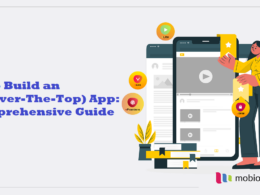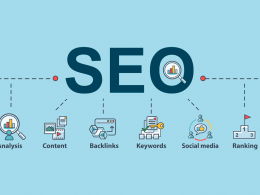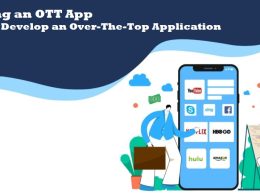In the rapidly evolving landscape of artificial intelligence, Generative Pre-trained Transformers (GPT) have emerged as a pivotal advancement, revolutionizing various industries. This family of neural network models, harnessing the transformative power of the transformer architecture, plays a critical role in the field of artificial intelligence, giving rise to applications like ChatGPT.
Unraveling the Power of GPT
GPT models possess a unique capability – the ability to generate text and content that closely resembles human expression. This encompasses a wide spectrum of media, including text, images, music, and more. Beyond mere reproduction, GPT models excel in engaging with users in a conversational manner, addressing questions and queries with remarkable depth and nuance.
Significance of GPT in Modern AI
The ascent of GPT models, particularly fueled by the innovative transformer architecture, marks a watershed moment in AI research. It catalyzes the widespread adoption of Machine Learning (ML) across diverse tasks. From language translation to document summarization, the applications of GPT models are boundless. They streamline tasks ranging from content creation, website development, and visual design to in-depth research, demonstrating unprecedented efficiency.
Versatility in Applications
GPT models are versatile, capable of performing a wide array of tasks. These include generating original content, writing code, summarizing text, and extracting crucial data from documents. Let’s delve into some key applications:
1. Crafting Compelling Social Media Content
Empowered by artificial intelligence, digital marketers leverage GPT models to craft captivating content for their social media campaigns. From producing explainer video scripts to creating memes and marketing copy, GPT-driven image processing software transforms text instructions into engaging visuals.
2. Adapting Text to Varied Styles
GPT models excel in generating text tailored to diversestyles – be it casual, humorous, or professional. This capability finds utility in various domains. For instance, legal professionals can effortlessly transform intricate legal documents into easily comprehensible explanatory notes.
3. Facilitating Learning and Writing Code
In the realm of programming, GPT models exhibit prowess. They possess the ability to comprehend and generate code in multiple programming languages. This is instrumental in aiding learners by providing explanations in layman’s terms. Additionally, experienced developers benefit from GPT tools, which offer pertinent code suggestions.
4. Streamlining Data Analysis
Business analysts find immense value in GPT models for efficiently processing large volumes of data. These models swiftly sift through information, performing calculations and presenting results in structured formats, such as data tables or spreadsheets. Some applications even extend to generating comprehensive reports and visualizations.
5. Enabling Interactive Learning Materials
Educators leverage GPT-based software to create dynamic learning resources like quizzes and tutorials. Furthermore, these models can be employed to evaluate responses, streamlining the educational process.
6. Pioneering Interactive Voice Assistants
GPT models serve as the cornerstone for crafting intelligent interactive voice assistants. Unlike conventional chatbots, these models possess conversational AI capabilities, enabling human-like verbal interactions when coupled with complementary AI technologies.
The Intricacies of GPT’s Functionality
While broadly categorized as artificial intelligence, GPT models operate on a more specific premise. They are neural network-based language prediction models, underpinned by the robust Transformer architecture. These models exhibit a remarkable capacity to understand and predict responses based on natural language queries, or prompts.
Under the Hood: Transformer Architecture
At the core of GPT models lies the transformative Transformer neural network architecture. It employs self-attention mechanisms to focus on distinct segments of the input text during each processing phase. This enables the model to capture extensive contextual information, enhancing its performance in natural language processing tasks.
Encoder: Contextualizing Text Inputs
Transformers begin by processing text inputs as embeddings, which are mathematical representations of words. These embeddings, when mapped in vector space, position semantically related words in close proximity. The encoder component dissects the input, assigning weights to individual words based on their relevance within the sentence. Additionally, position encoders play a vital role in disambiguating potential semantic ambiguities.
Decoder: Predicting Outputs
The decoder module utilizes the vector representation generated by the encoder to predict the desired output. It incorporates self-attention mechanisms to focus on specific segments of the input, making informed predictions. Through sophisticated mathematical techniques, the decoder estimates multiple potential outputs, ultimately selecting the most accurate one.
Evolution of GPT: Training Insights
The journey of GPT-3, the latest iteration in the GPT series, exemplifies the strides made in training language models. With an astounding 175 billion parameters or weights, GPT-3 stands as a testament to the power of generative pretraining. It underwent training on an extensive 45 terabytes of data, culled from diverse sources including web texts, Common Crawl, books, and Wikipedia. This exhaustive pre-training process was complemented by fine-tuning through reinforcement learning with human feedback.
In conclusion, Generative Pre-trained Transformers (GPT) have emerged as a cornerstone of modern artificial intelligence. Their transformative impact spans a multitude of industries, revolutionizing tasks from content creation to data analysis. The fusion of transformer architecture and neural networks imbues GPT models with unparalleled capabilities, making them indispensable in the contemporary AI landscape. Harnessing the potential of GPT is not just a technological leap, but a strategic imperative for organizations seeking to redefine productivity and customer experiences.
See Also: Understanding The True Odds Of Flip A Coin: Debunking The 50-50 Myth











